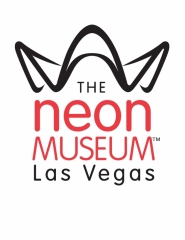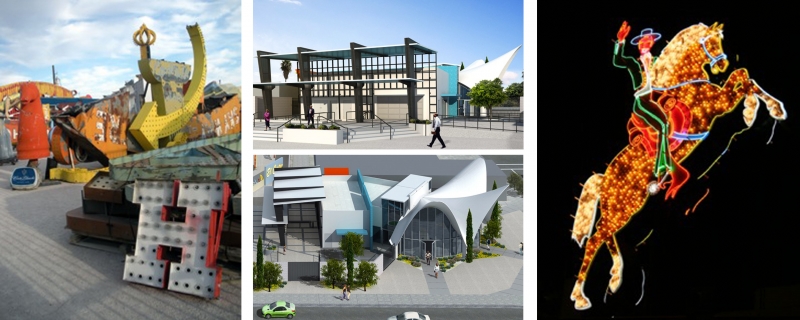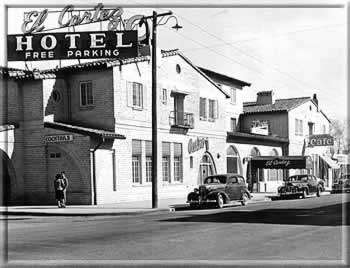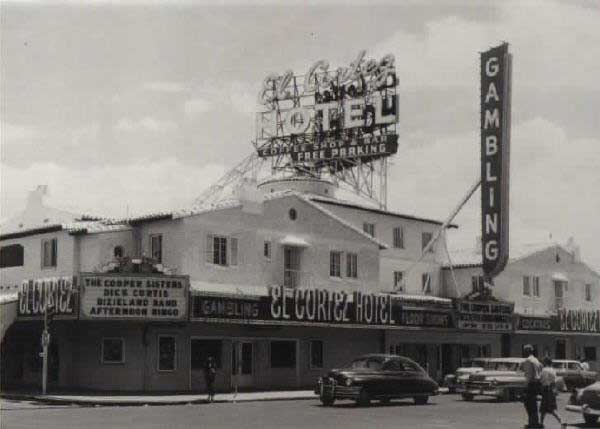Review of "Vegas"
Welcome to our weekly review (from someone who grew up there during that time and has chronicled the 20th century history of her hometown) of Vegas (2012), the new drama on CBS starring Dennis Quaid and Michael Chiklis. Quaid plays Sheriff Ralph Lamb, the real life Sheriff who squared off against the bad guys in 1960s and 1970s Las Vegas. Chiklis plays Vincent Savino, a Chicago mobster who has come to Las Vegas because his casino, The Savoy, needs cleaning up.

Jason O'Mara plays Jack Lamb, Quaid's brother. Where Ralph is quiet, taciturn and hard headed, Jack is "much better with people". Carrie-Ann Moss plays fictional deputy district attorney, Katherine O'Connell. According to her character, her family had the ranch next to the Lamb family. She and Quaid have chemistry together and the story hints at a backstory between the two. Lamb is a widower when we meet him with a young son who looks to be in his early twenties.
Right now, all four main stars are playing archetypes instead of characters. Here's hoping that CBS allows them to develop the characters and become the strong drama that is evident but sadly, in the background right now.
The opening scene begins at the Lamb ranch as Ralph, Jack and Ralph's son were rounding up the cattle. A DC-4 came in low and scattered the cows. Ralph got angry, saddled up and headed to the airport to confront someone about the problem. At the airport, he found the official he was looking for and a fight ensued as Savino was disembarking from the plane and headed toward his ride.
The pilot focused on the murder of a young girl who worked in the credit department at the Savoy Hotel but whose body was found out at the Nevada Test Site. The mayor, Ted Bennett, (Michael O'Neill), who knew Ralph in the war and fed up with the current sheriff (who more likely than not is corrupt and up in Reno on vacation with a young woman not his wife), sent a deputy to the Lamb ranch to get Ralph. Unbeknowst to the Mayor, Ralph was headed into Las Vegas in the back seat of a squad car, arrested for the fight at the airport. The blue/green screen work of Fremont Street, circa 1960, was quite good (though the far end of Fremont Street was missing the neon Union Pacific sign that anchored the old train depot).
As with other CBS procedurals (see NCIS, CSI: Las Vegas, Criminal Minds, etc), the story focused on the crime and by the end of the episode Ralph had kept his friend, Katherine O'Connell from arresting the dead girl's boyfriend, a rodeo rider, for the crime and had figured out who the real killer was.
A sub-plot involving bikers tearing up the town brought back memories of the original story of Lamb facing off against Hell's Angels in the late 1960s.
At the end of the hour, the original sheriff had been dispatched thanks to the district attorney and Savino's crew and his murdered body had been found, prompting Ralph to take the job on full time.
Quaid's character is very much cut from the same mold as Jethro Leroy Gibbs on NCSI but, hopefully, going forward, he will become his own character and not a mirror image of the beloved Gibbs.
Michael Chiklis has the harder role, especially right now. Vincent Savino is a hood from Chicago with very little back story. He and Quaid are on the path to a showdown but without more character, back story and story telling, that showdown could ring hollow.
If cable dramas from Justified to Breaking Bad to Mad Men has taught viewers anything it's that it's possible to mine the depths of character and create a compelling story that brings viewers back every week to see what happens and propels the story forward.
CBS has two shows that they have allowed to do that- The Good Wife and Person of Interest. Here's hoping CBS gives Nick Pileggi (author of Casino) and showrunner Greg Walker (Without a Trace), the freedom to do what Robert and Michelle King and Jonathan Nolan and Greg Plageman have done for their shows.
Pilots are always tricky to judge how a series will play out because so much has to be established in a short amount of time and networks want to hook viewers. It's doubtful people are tuning in to watch CSI: The 1960s and are much more interested in watching "the battle for the soul of Sin City" as the ads tout the premise. If CBS gives them the freedom to make the latter, it will make Vegas a show worth watching and worth investing in.

Various thoughts about everything from the production design to the story to the characters:
The opening scene with the DC-4, Ralph and the airport: McCarran Airport was a small airport but not quite that small. If it was supposed to be Alamo Airways, it wasn’t close. George Crockett would not have allowed something like that.
The showroom at the Savoy had good production design. The showgirls were very Copa like. But I'm still not sure where The Savoy is located- Fremont Street or the Strip? Interior of the The Savoy was very nice, the exterior too far out to the street. Unlike today, hotels on the Strip had long drive ways, a porte cochere and were built to catch the eye of drivers. If it was supposed to be on Fremont Street, it was out of place. The showroom with the Copa-like showgirls made me think it was supposed to be on the Strip. To their credit, someone did their homework because they got the interior right. Strip casinos back then weren't covered end to end with slots and gaming tables the way they are today.
Great job of Fremont Street. Only problem was it looked like the Fremont hotel was briefly on the same side of the street as the Nugget. If so, oops! Also, oops, the Golden Nugget had a weeping mortar facade, not the fake MCM facade seen on the show.
Great seeing William Russ, even if it was too briefly. (Made it a nice shout-out to Wiseguy, the Ken Wahl show that included a law man and a gangster one season). Russ plays a well-connected real estate owner who owns a great deal of land (either on Fremont Street or the Strip, that part wasn't clear) and the local BBQ joint (nice neon) that wasn't really part of the Fremont Street landscape but Fremont Street back then had a number of popular eateries that catered to the locals as well as the gamblers, so it fits. Hopefully, Russ is a recurring character.
Dennis Quaid has a great face for the part (bad haircut and all) and Chiklis is terrific as Vincent Savino, even if his character needs more meat on his bones.
Props to the Production Designer, Marek Dobrowolski, for creating various sets that while they may not be historically accurate, evoke that era before post-war Las Vegas exploded into the Entertainment Capital of the World.
Director James Mangold (3:10 to Yuma, Walk the Line) brought the flair and drama in equal proportions.
Nice shout out to Warm Springs. We used to go to Warm Springs when I was a kid in the early 1960s.
Nice neighborhood Ralph’s son’s chippie lives in. Seemed very Vintage Vegas.
A casino that was modeled after the Mint!!!!! (Looks like it’s called, The Dice Club) You could see the arch of the pylon sign through the window when Mayor Bennett was talking to Katherine and the district attorney. And for the record (I've seen viewers criticizing them for this point), there were a small handful of pioneering female lawyers practicing in Las Vegas in 1960.

The Boulder Club got a shout out (though it was in the wrong place)! The Silver Palace was in the wrong place but the two story buildings that you could see from the Mayor's windo were spot on.
The Nevada Test Site is a bit of a hike to dump a body but it makes for good story telling. Though there was still above ground testing going on so the possibility of getting on the Site to dump a body or a bunch of bikers going for a ride out there were severly diminished. And for the record, Boulder City is nowhere near the NTS.
Quaid and Moss have good chemistry.
Quaid and Chiklis have a good adversarial relationship.
Ralph's son isn’t a teenager (thank you Lord!), is lippy and has good chemistry with O’Mara.
It wasn’t quite as rural as they would like you to believe.
Westward Ho neon was a nice touch, very retro would have been better to be the Yucca or the Rummel (both are still standing).
The DA is crooked or certainly appears to be.
Where are all the smokers?
It’s not quite our history but it makes a good story. (am I the only one who thought of Crime Story while watching this show?)
Here's hoping they do something good and dramatic with it.
Hoping, hoping, hoping.......

Feel free to leave comments!!!!
"Vegas" begins Tuesday night
The new tv drama, Vegas, premieres Tuesday night, Sept. 25th. The drama airs on CBS at 10:00 following CBS' powerhouses NCIS and NCIS: Los Angeles.
The buzz around Vegas is very positive. Hollywood Reporter TV Critic Tim Goodman predicts that the show will do just fine in the ratings and says the show could have a multi-year run, if they stick to character development and not fall into the crime of the week trap.
Here's the link to Goodman's review: http://www.hollywoodreporter.com/review/vegas-tv-show-review-dennis-quaid-cbs-371314
Don't forget, I'll be recapping/reviewing the show each week!
And here is Michael Chiklis on the CBS Morning Show talking about the show:
The Story of Classic Las Vegas: An Overview
It's funny, as we get older, we don't always remember the things we should.
Case in point, this video I created a few years ago and put up on Google Videos. Well, Google Videos merged with YouTube and this blast from my creative past came bubbling up earlier today when I logged on to YouTube to listen to a playlist.
For a moment, I was surprised that it was listed as private. I immediately changed the setting to public and want to share it with you:
If you would like to order your copy of The Story of Classic Las Vegas: An Overview go here.
Neon Museum Officially Opening Oct. 27th

THE NEON MUSEUM TO OFFICIALLY OPEN TO THE PUBLIC ON SATURDAY, OCT. 27
Featured Attractions Include Guided Tours of Neon Boneyard,
New Visitors’ Center Inside Historic La Concha Motel Lobby
After more than 15 years of planning, the Neon Museum, a Las Vegas historical institution dedicated to the preservation and celebration of some of the city’s most distinctive architectural landmarks, will officially open its doors to the public on Saturday, Oct. 27.
The Neon Museum, home to a collection of more than 150 neon signs dating from the 1930s, is the largest collection of neon signage in the world and a unique record of Las Vegas’ colorful history. Inside a two-acre outdoor museum space known as the Neon Boneyard, iconic signs from the city’s most celebrated properties — including the Moulin Rouge, the Desert Inn, the Flamingo and the Stardust — are displayed alongside those from various other bygone restaurants, hotels and businesses.
The museum’s new visitors’ center will be located on-site in the recently rehabilitated La Concha Motel lobby, the seashell-shaped, Mid-Century Modern architectural masterpiece designed and built by architect Paul Revere Williams. Originally constructed in 1961 on Las Vegas Boulevard South, next to the Riviera Hotel’s current location, the La Concha lobby was saved from demolition in 2005 and moved to its current location in downtown Las Vegas in 2006.

According to Bill Marion, chair, Neon Museum’s Board of Trustees, the museum’s official opening will bring both a significant cultural and economic impact to the community. “There is renewed interest in ‘old’ Las Vegas and in the rediscovery of the historical downtown area. The Neon Museum will play a major role in this renaissance by bringing new visitors to downtown Las Vegas, by creating additional opportunities for tourism growth and by adding to the ongoing economic revitalization of the area,” says Marion.
Tours of the Neon Boneyard, which last approximately 45 minutes, will be available to the public every half hour starting at 10 a.m., with the last tour departing at 4 p.m., every Monday through Saturday. Tickets are $18 for adults; $12 for students with valid ID, senior citizens, veterans and Nevada residents. Children ages 6 and under are free. Tour capacity is limited. To ensure admission on the date and time desired, visitors are advised to purchase their tickets in advance through the Neon Museum’s Web site, www.NeonMuseum.org. The La Concha Visitors Center will be open Monday through Saturday from 9:30 a.m. until 5:30 p.m. Both facilities are located at 770 Las Vegas Blvd. North, Las Vegas, NV, 89101.
“Visitors from around the world have been eagerly anticipating the Neon Museum’s opening for many years, so it gives us tremendous pleasure to be able to unveil this remarkable and historic collection to the public,” says Danielle Kelly, executive director, Neon Museum. “Our goal is to give guests an enhanced appreciation for Las Vegas’ rich visual culture while celebrating the beauty and craftsmanship of a distinctly modern art form.”
In addition to the Neon Boneyard and visitors’ center, the Neon Museum has partnered with the City of Las Vegas to create the Las Vegas Signs Project, in which restored signs from the museum’s collection have been installed on Las Vegas Boulevard between Sahara and Washington Avenues — a stretch of roadway that has been designated a National Scenic Byway by the U.S. Department of Transportation. Currently, seven restored signs from the 1950s are on display, including the Silver Slipper, the Bow & Arrow Motel, Binion’s Horseshoe, Society Cleaners, the Lucky Cuss Hotel, the Normandy Hotel and the Hacienda Horse and Rider.
The museum’s collection also includes nine restored signs installed as public art throughout the downtown area. The Downtown Gallery begins on Fremont Street at Las Vegas Blvd. and extends west toward Third Street. Signs in this gallery include Aladdin’s Lamp, The Flame Restaurant, the Chief Court Motel, Andy Anderson, The Red Barn, Wedding Information, the Nevada Motel and Dots Flowers. Further south, the 5th Street Liquor sign, located on Casino Center St. near Garces Ave., features a classic example of the type of animation that was frequently used in neon signage, and the Landmark Hotel sign, located on Paradise Road near Convention Center Dr., has been placed near the site where the iconic property stood until its demolition in 1995.
ABOUT THE NEON MUSEUM
Founded in 1996, the Neon Museum is a non-profit 501(c)3 organization dedicated to collecting, preserving, studying and exhibiting iconic Las Vegas signs for educational, historic and cultural enrichment. In addition to a two-acre outdoor exhibition space known as the Neon Boneyard, the museum also encompasses a visitors’ center housed inside the former La Concha Motel lobby as well as 16 restored signs installed as public art throughout downtown Las Vegas. Public education, outreach, research, archival preservation and a grant-funded neon sign survey represent a selection of the museum’s ongoing projects. Both the Neon Boneyard and the La Concha Visitors’ Center are located at 770 Las Vegas Blvd. North in Las Vegas. For more information, visit www.NeonMuseum.org or follow us on Facebook or Twitter.
El Cortez is going for Historic Designation

The owners of the venerable El Cortez are working towards getting the venerable downtown casino on the National Register of Historic Places.
It's brick facade dates back to 1941 when Marion Hicks built the small casino with 59 rooms. When Bugsy Siegel finally made that long drive up the highway in the early 1940s, it was not to have a fever dream about building a carpet joint on the Strip but to muscle his way into the race wire at the El Cortez. But the Hollywood story sounds betterm no doubt. Siegel finally got his hands on the El Cortez when Hicks sold the property to him in 1946. Renowned Southern California architect, Wayne McAllister did the remodel on the El Cortez in 1946.
Local hotel entrepreneur J. Kell Houssels, Jr, bought the property and under his stewardship it thrived.
In 1963, young Jackie Gaughan, who had come to Las Vegas in 1943 when he was stationed at the old Air Base (that would become Nellis). He moved his wife Roberta and two sons, Michael and Jackie, jr to Las Vegas in 1951. He bought a small 3% of the Boulder Club and 3% of the Flamingo with partner Eddie Barrick. Jackie had a knack for sports books and handicapping. In 1961, he and partner Mel Exber bought the Las Vegas Club and in 1963, they bought the El Cortez. Gaughan hired Wayne McAllister to oversee the design and construction of a new room tower.
Jackie invented the Fun Book, filled with coupons for free drinks, free slot pulls and two for one dinners. Like Benny Binion, he had a knack for understanding and treating his customers like kings.

Today, the El Cortez has been restored and is thriving. It is a major partner in the East Fremont Entertainment District.
The application is being put together by historian Pete Moruzzi. It still needs the approval of the State offiice of Historic Preservation and the National Park Service. Unlike many of the casinos on the Strip where anything considered old must be upgraded, paved over or blown up, the El Cortez (and the Golden Gate) have relished their roots and still have their historic bones intact.
It's Spanish Colonial Revival architecture and its role in the post-war development of Las Vegas should not be overlooked.
Dr. Michael Green, historian and teacher at the College of Southern Nevada, says, "I think the El Cortez belongs on the historical registry. It's one of the oldest hotel-casinos in one of the world's leading resort cities. It reflects the architecture of its time. It symbolizes the evolution of Las Vegas through its own history of growth and controversy."
"Its owners have included some figures of considerable historical significance. One of its builders, Marion Hicks, appears to have had some ties to Meyer Lansky, and Moe Sedway and Bugsy Siegel, the owners who came after Hicks, definitely were part of organized crime. Their successors include two of the most important figures in the history of Las Vegas."
"J. Kell Houssels, Sr., owned several casinos downtown and eventually, with the Tropicana, on the Strip, but also was active in other businesses such as transportation and restaurants, and involved in real estate and community development. Jackie Gaughan bought the El Cortez from him with his partners, and Gaughan has been a pioneer in locals casinos and their promotion. The El Cortez contains a lot of Las Vegas history."
When I was growing up in Las Vegas, Fremont Street was the heart and soul of the city. We did our shopping, our dining, our cruising on weekend nights ala American Graffitti , all on Fremont Street. Across the street from the El Cortez was our Sears store with its pylon neon sign. Our moms had no problem taking us to Sears and never blinked twice at the gambling casino across the street.
The roof top sign was added in 1952. The other roof top signs for the El Portal Theater and the five and dime store, Coronet have long vanished from the downtown skyline but the El Cortez management keeps and maintains their sign. It's glowing neon can be seen up and down Fremont Street.
Pete Moruzzi has unearthed a deed for the property that goes back to the mid-1940s. Listed as owners are Moe Sedway, Gus Greenbaum and other mob associates of Benjamin "Bugsy" Siegel. Though Siegel would soon begin to focus on building the Flamingo Hotel out on the Strip, the El Cortez continued to be a major player on Fremont Street. It still is today and we hope for years to come.
We completely support historic designation for the El Cortez.


